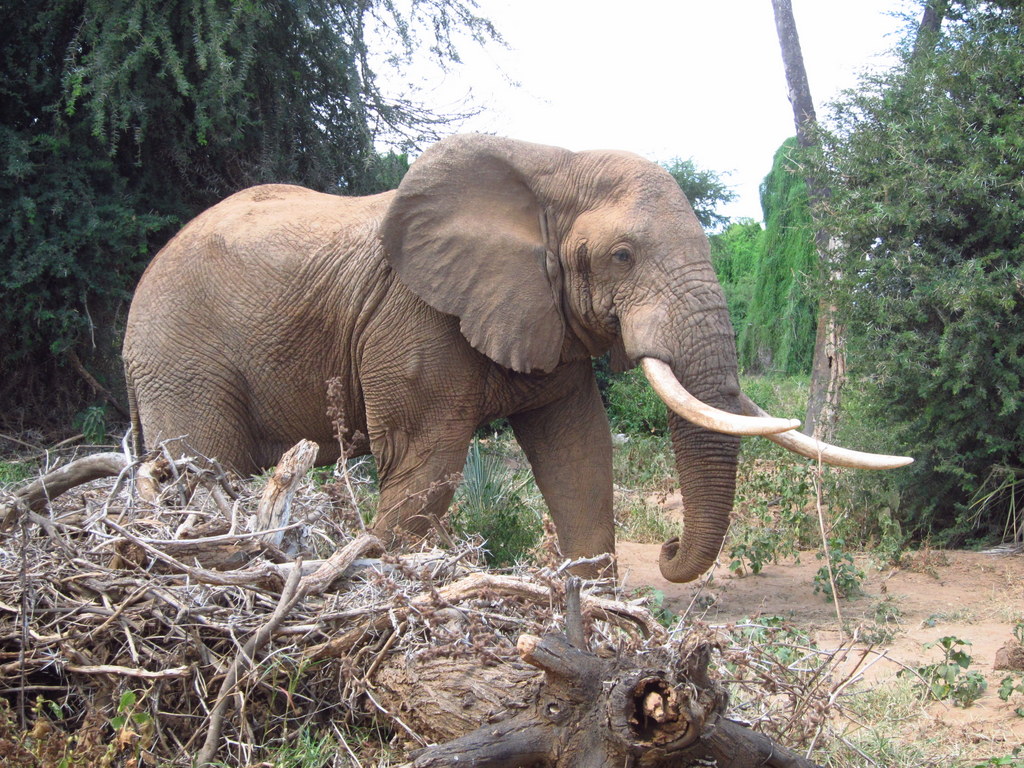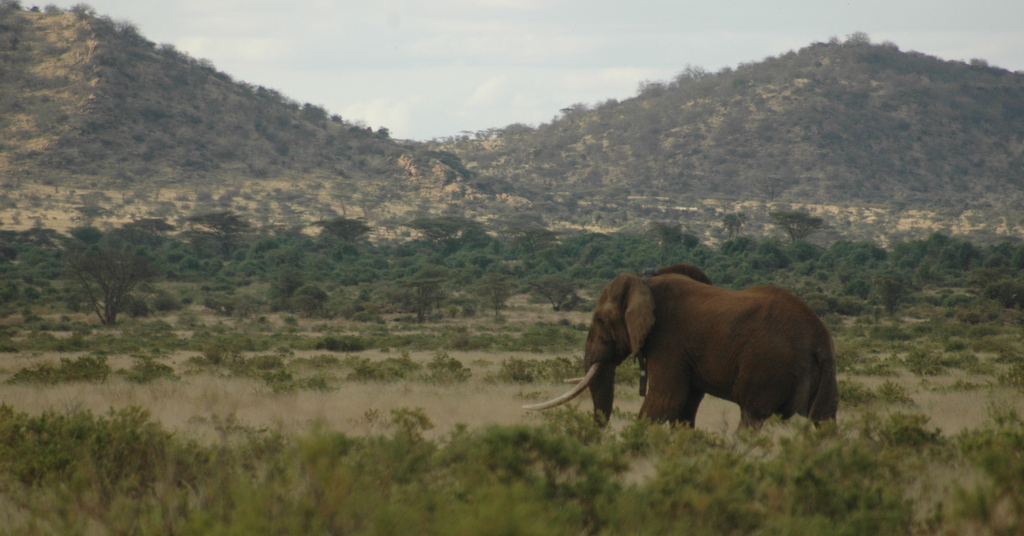
NEWS DESK POST by Save the Elephants
One of north Kenya’s largest tuskers, a celebrated African savanna elephant called Matt, has sadly died.
Matt, who was aged 52 and one of Kenya’s well-known elephant elders, apparently died from natural causes. During his lifetime he roamed further than any other Kenya elephant tracked by Save the Elephants, nearly circumventing Mount Kenya from Meru all the way to Laikipia, a continuous east-to-west loop of approximately 245 km. His travels also took him northward across Samburu for a stretch of 220 km.
His body was found by the Northern Rangelands Trust 9-1 anti-poaching unit on Monday October 7, and reported to the Kenya Wildlife Service.

Measuring 10 feet tall at the shoulder and weighing over 6 tons, Save the Elephants first collared Matt with a GPS tracking collar in 2002 so researchers could monitor and study his behaviour and rangers could protect him from poachers. Matt’s range turned out to span all the way from Meru National Park on the Tana River, through three national reserves including Samburu, and half a dozen community conservancies to the west of the elephants’ range. With his large size and spectacular tusks, Matt survived and thrived during the high-risk poaching epidemic a decade ago – a testament to his adaptation and local knowledge. The crisis killed an estimated 100,000 elephants across Africa in just three years, between 2010 and 2012.

Matt was no ordinary bull. His curiosity always kept researchers on their toes and he was a master at shredding tracking collars that kept him in the spotlight. Matt’s last collar was fitted in March 2016, and for the next three years (until last week) his position was recorded every hour for his protection and for the collection of important data.
As a dominant bull elephant, Matt would make yearly journeys from his resting area east of the Matthew’s Range to the Samburu National Reserve where he could find females in oestrus. He appeared in numerous nature documentary series including the BBC’s ‘This Wild Life’, ‘The Secret Lives of Elephants’ and ‘Nature’s Epic Journeys’.
In 2017, Save the Elephants founder, Iain Douglas-Hamilton recorded a dramatic scene (see video below) with Matt after he went to investigate a confrontation between the great bull and another elephant called Edison and found himself stuck in the middle.

About Save the Elephants
Save the Elephants works to secure a future for elephants in Africa. Specialising in elephant research, STE provides scientific insights into elephant behaviour, intelligence, and long-distance movements and applies them to the challenges of elephant survival. Through our thriving education and outreach programmes, we reach out to hearts and minds, making local people the true custodians of their own rich heritage. Our human-elephant conflict mitigation projects, especially beehive fences, have reduced the number of crop-raiding incidents, and provide farmers with elephant-friendly alternative sources of income. To battle the current surge in ivory poaching, our Elephant Crisis Fund is identifying and supporting the most effective partners in Africa and in the ivory consuming nations to stop poaching, thwart traffickers and end demand for ivory.
To comment on this story: Login (or sign up) to our app here - it's a troll-free safe place 🙂.![]()






